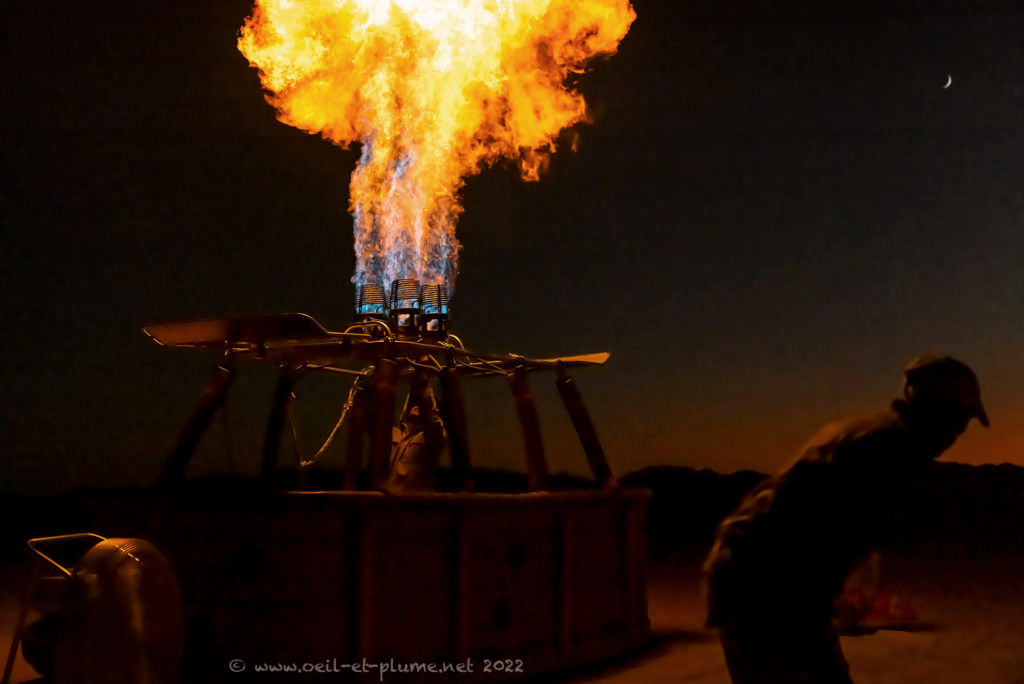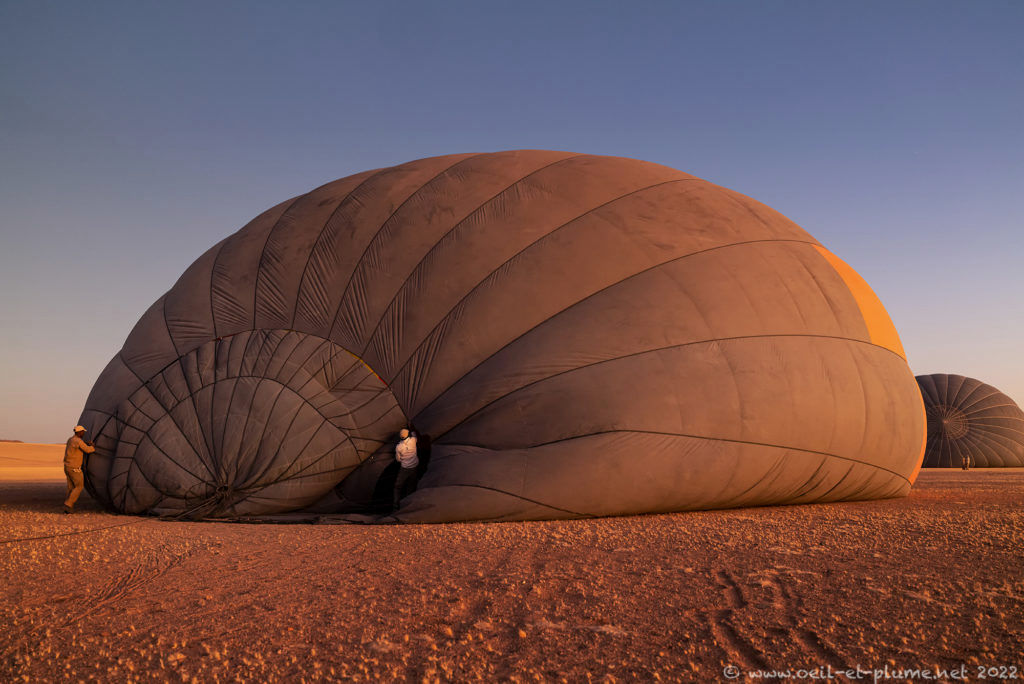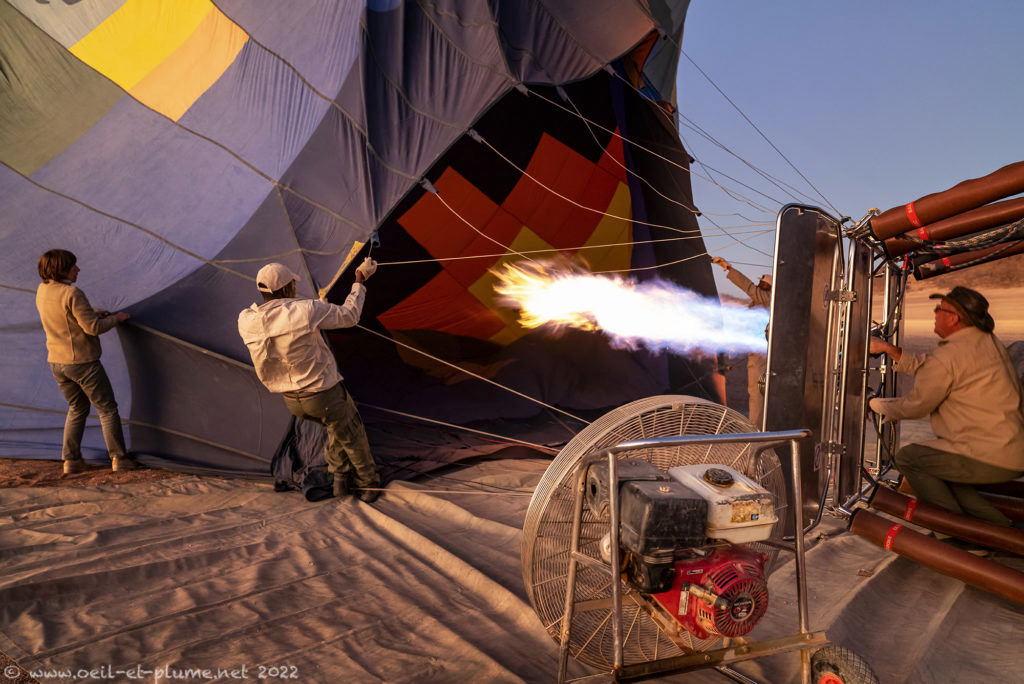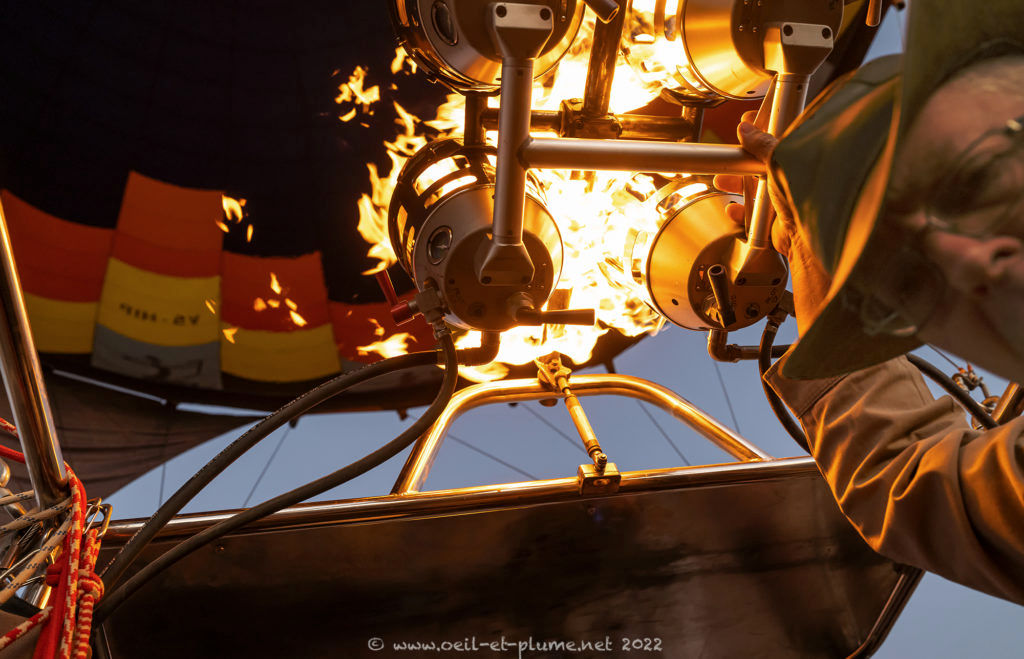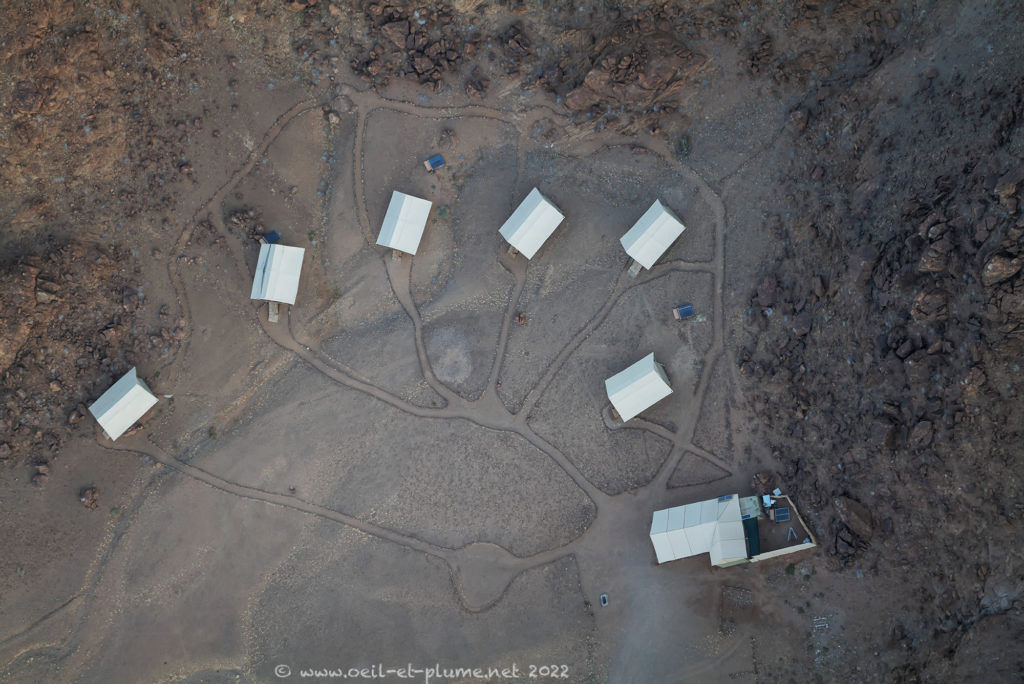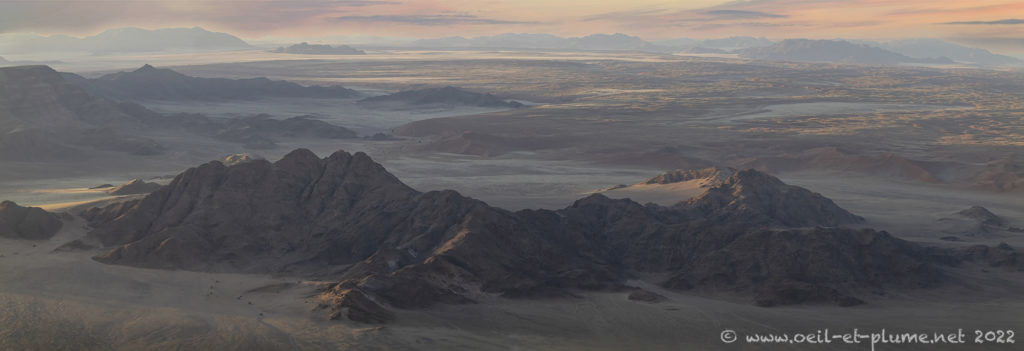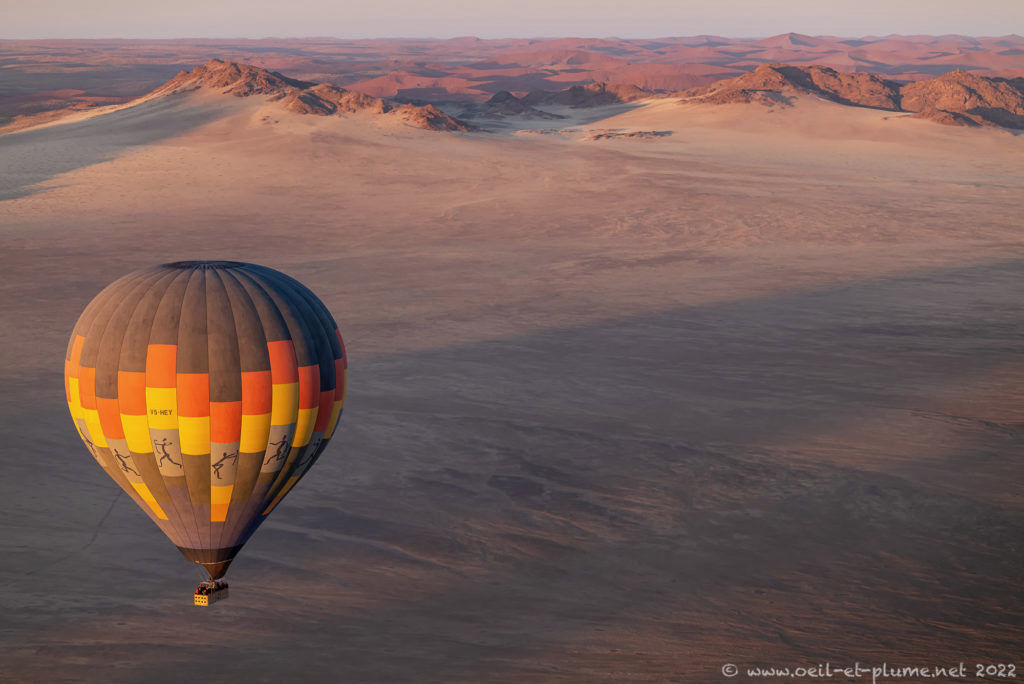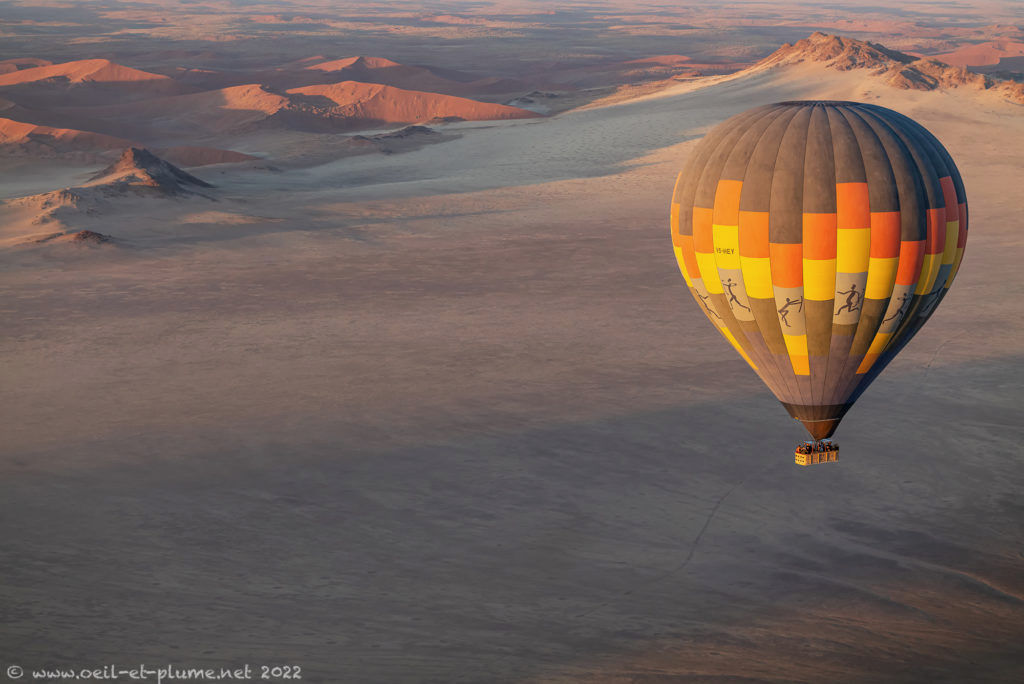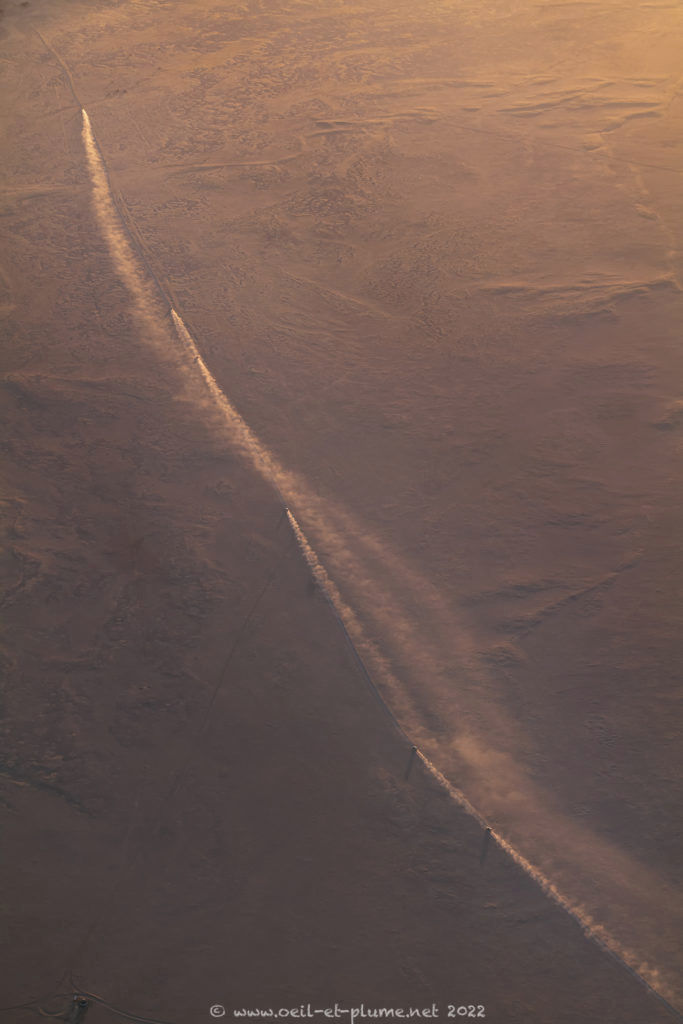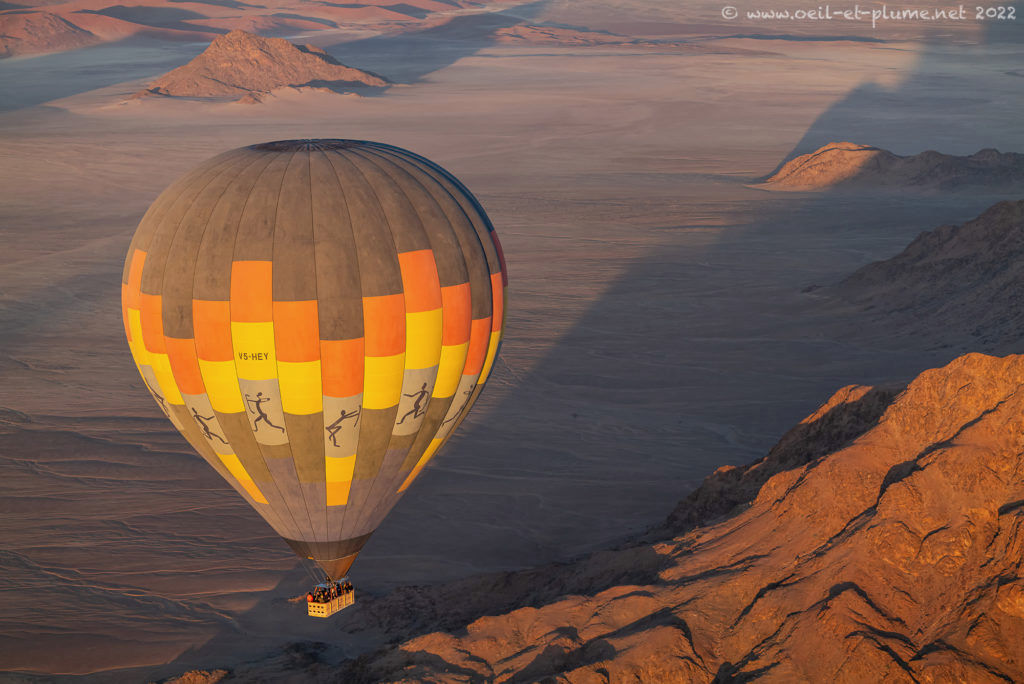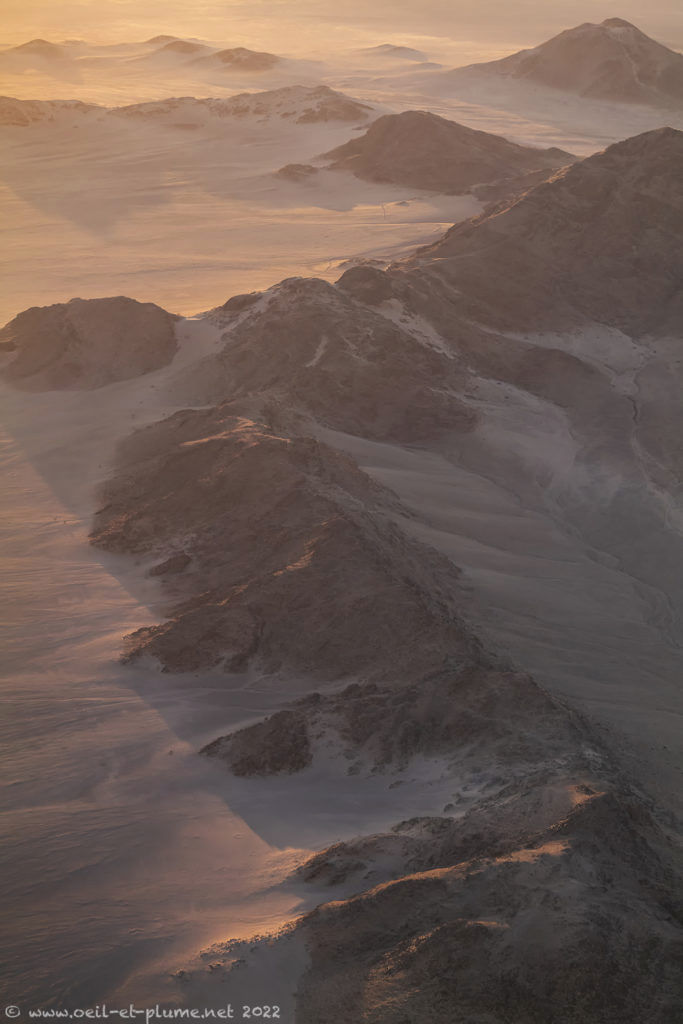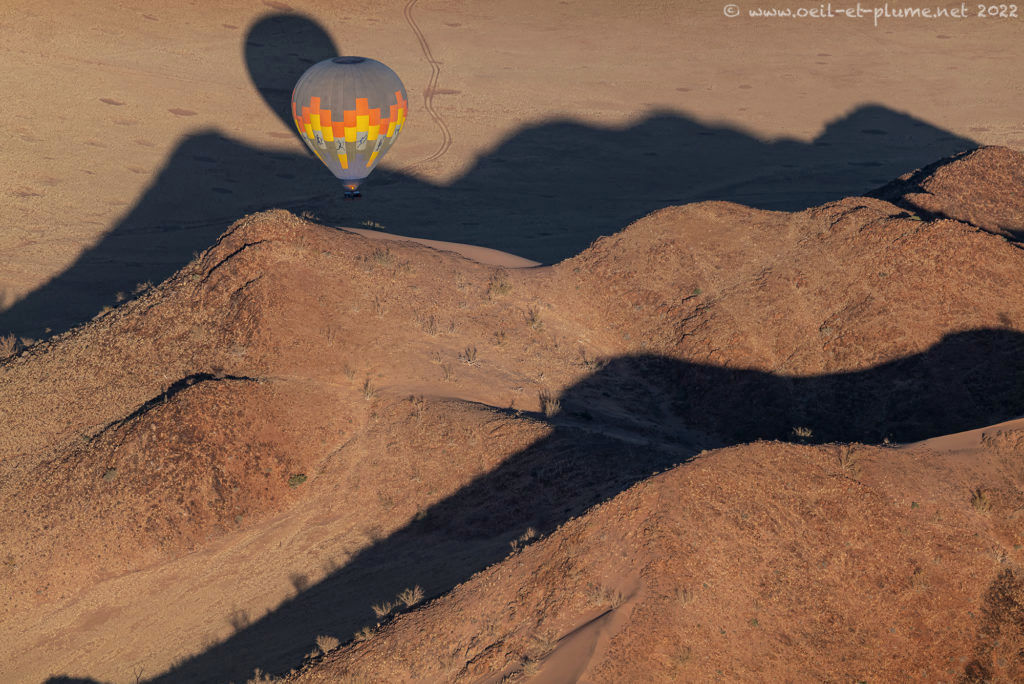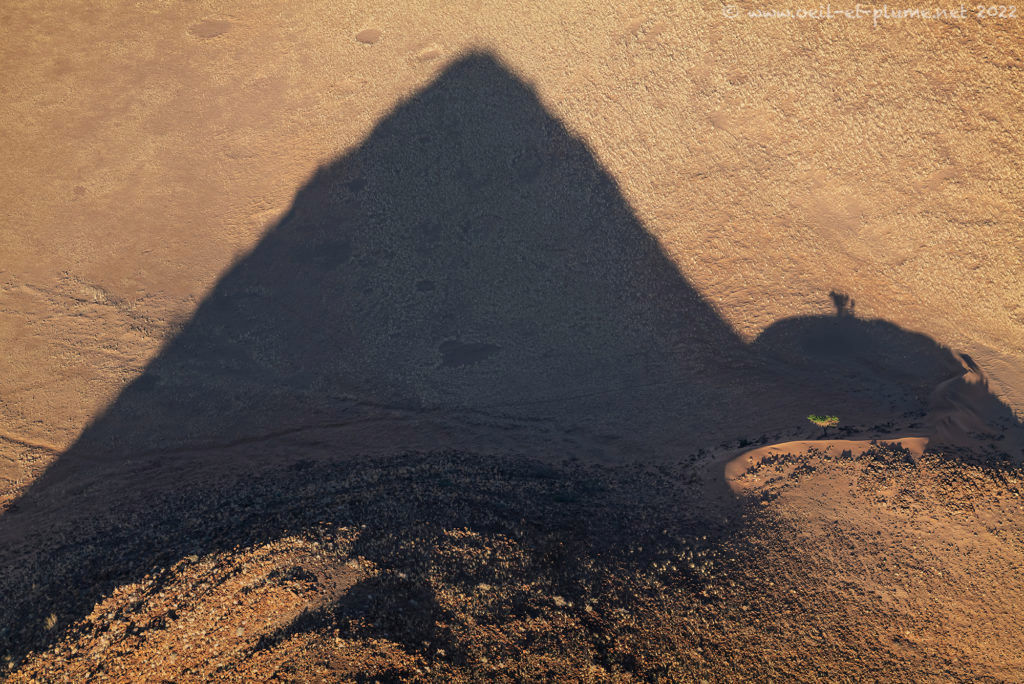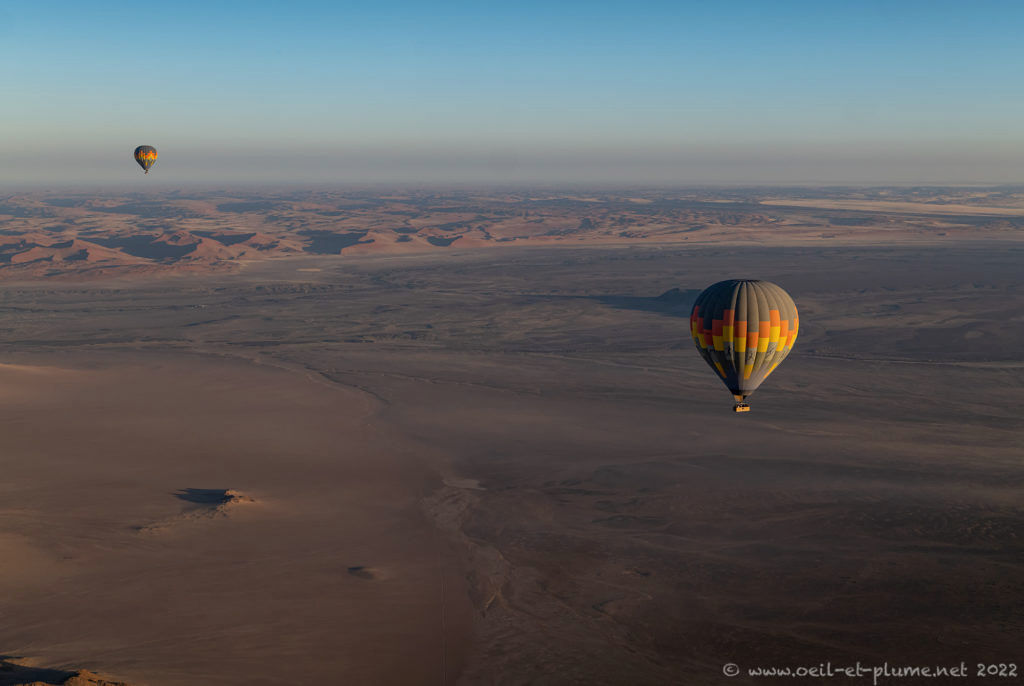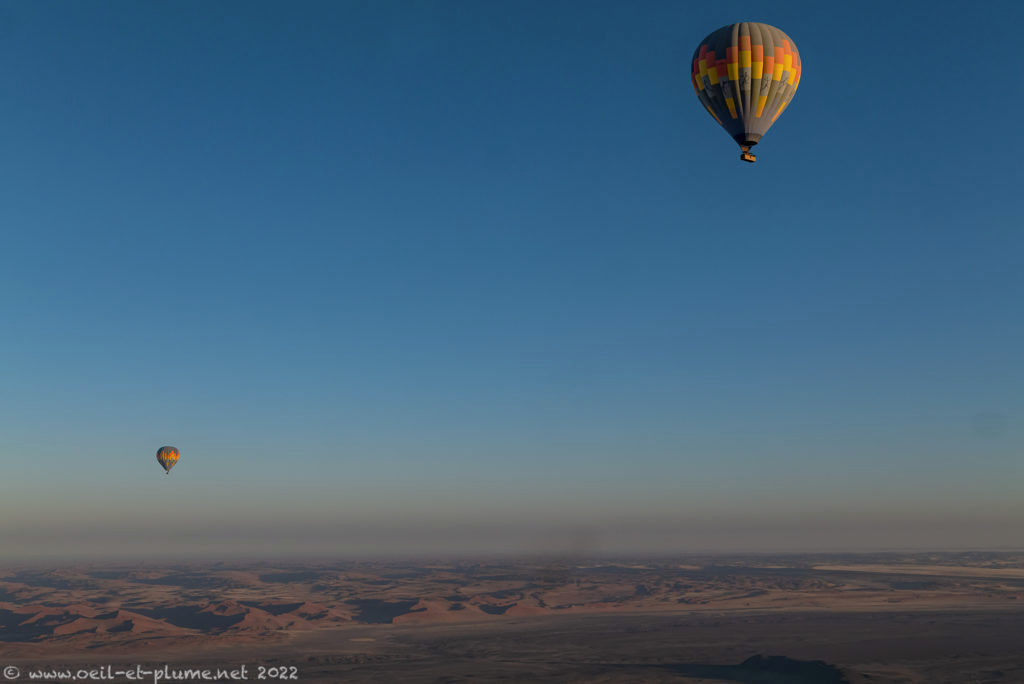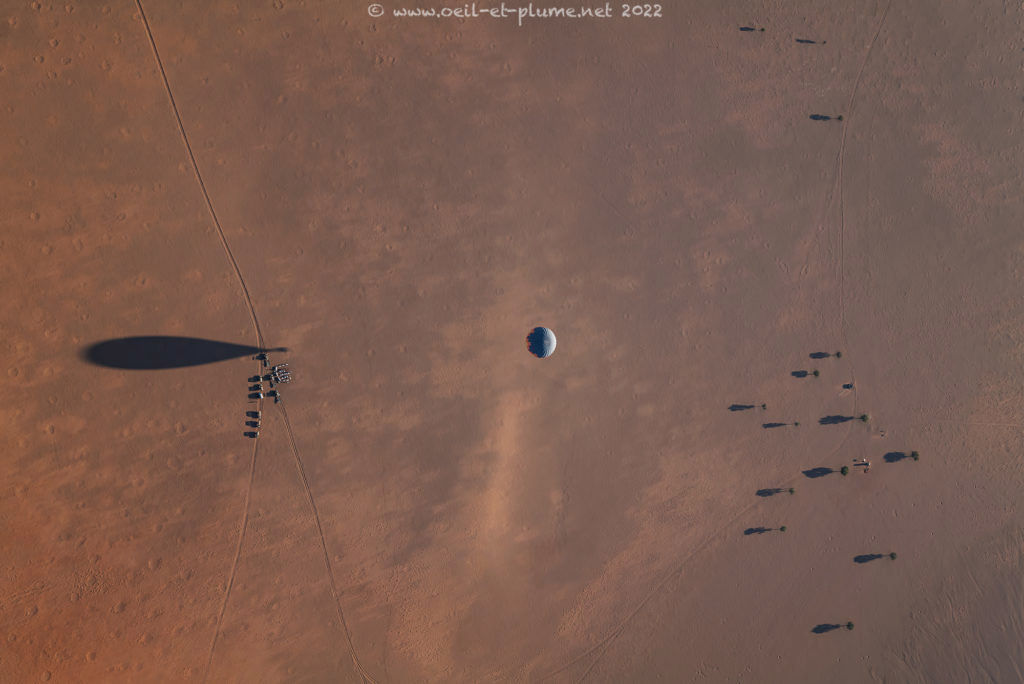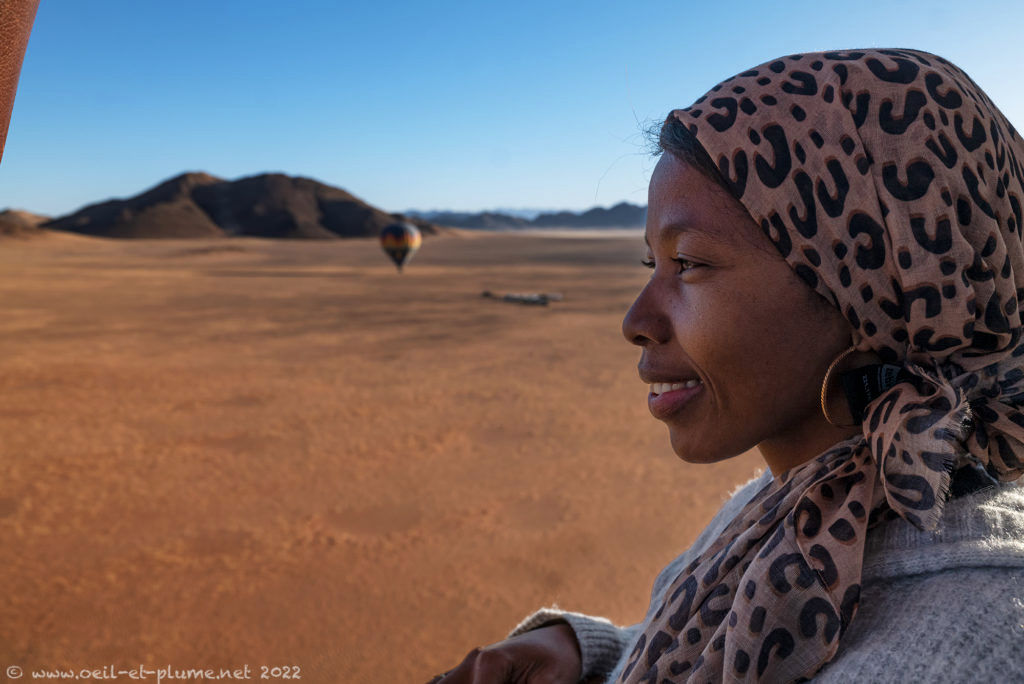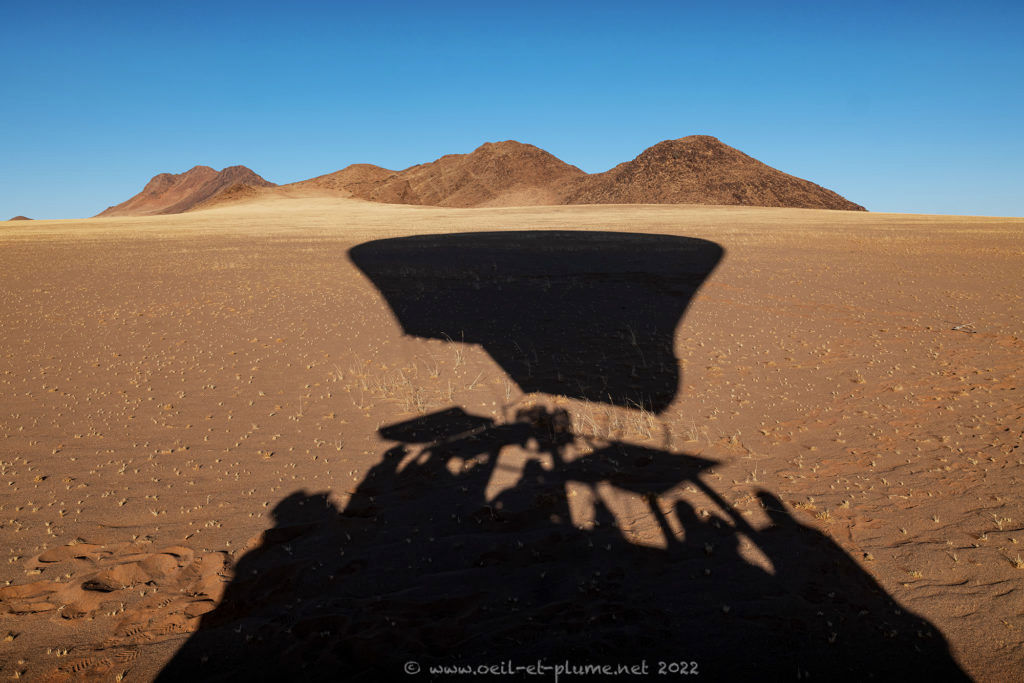All of a sudden, the pilot tests the gas burners of the balloon. The flames roar fiercely upward in the pre-dawn sky enlightened by the moon crescent. We are about to set off our balloon flight over the Namib desert.
As we gain altitude, we take stock of the uniqueness of the situation. We move but barely notice it. The pace is slow but steady. The wind streams are imperceptible, except when we change direction. There is no noise, except for the periodic emotional bursts of the gas burners. We don’t feel like defying the gravity. Instead, we simply tune and fuse with the natural elements. This is magical.
The Namib desert impresses for its vastitude as it stretches for more than 2,000 km along the Atlantic coast of southern Africa. The name Namib means “vast place” in local language. From the sky, even modest parts of the desert appear as huge while human footprints look insignificant.
The Namib desert is also probably the oldest desert on earth, subject to arid climatic conditions since about 55–80 million years. Against all odds, life possible with only 2 to 200mm of rain water yearly. Numerous vegetal and animal species live in the Namib desert, including elephants. Few indigenous people manage as well, on pastoral mode or in small settlements.
To me, the Namib desert represents the cradle of humanity. Human life must have started here, in such a pure and genuine natural environment. Adam and Eve met certainly there, before the Eden garden morphed into the Namib desert. Humanity will probably crumble here as well. As a hint, the apocalyptic Mad Max: Fury Road movie was shot mostly in the wilderness of the Namib in 2012.
The Namib desert displays an incredible colour palette privileging warm red and yellow tones that paint the bare landscape even the wee hours. Our balloon uses astutely the wind and the light to approach the most scenic locations and to play with natural shadows.
From the sky, the Namib desert sand is bombarded by tens of thousands of “fairy circles” – barren circles edged with vegetal patches. The scientific rationale of the phenomenon is still unclear: the circles could be created by termites living under the soil or by surrounding plants competing for water, or by a combination of both patterns.
I prefer the indigenous traditional beliefs. For the Himba people, the rounded barren patches are the tangible footprints of the gods. The Bushmen traditionally ascribe them spiritual and magical powers. Hence the fairy circles.
Down there, our landing site and breakfast are being prepared. But I don’t want to touch ground anymore. I wish to remain in the air as a Namib’s bird or spirit. Deaf to my call, the balloon looses gradually altitude to land as smoothly as it took off.
This has been an awesome and unforgettable experience. I am no longer the same globetrotter – feeling now more serene and better tuned with Mother Earth. The vastitude of the Namib desert does not mean emptiness at all. Instead, it fills our eyes, lightens our soul and reminds us about the human life’s essentials.
Cheers,
